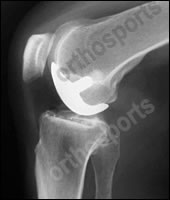What Is This Uni Knee Replacement?
Unicompartmental knee replacement is done for people who have arthritis in a specific part of their knee. It means that only a part of the knee joint is replaced rather than a total knee replacement.The medial and lateral compartments are between the femur and tibia (the thigh bone and the shin bone). It is more common for the inside one (medial) to wear out than the outside (lateral).
If:
- Your pain is from one part of the knee only and
- x-ray confirms ‘disease’ in that part of the joint only
then you may be suitable for this procedure. Typically you will be able to point with one finger to exactly where the pain is coming from. Partial knee replacement is only reliable if there is ‘bone on bone’ on the xray rather than just mild or moderate arthritis. There are many reasons that you may not be suitable for a unicompartmental knee replacement.
All medical treatments should be tried first. If these fail then surgical intervention can be considered. Osteotomy (cutting the bone and realigning it) is good in young active patients to shift the forces away from the arthritic part of the joint to the good part of the knee. Total knee replacement is the definitive treatment when more than just one part of the knee is involved.
The knee is opened at the front of the joint and the arthritic lining of the knee is removed. Typically it is the medial side of the joint which is replaced with a metal component on the femur and the tibia. A special plastic (polyethylene) insert is placed between these metal pieces to produce an artificial joint. With careful patient selection this procedure has been done successfully for many years (although in the past it was through a much larger cut with much more trauma to the knee). More recently it has become possible to do it through a much smaller incision, allowing the knee to recover faster. Even with modern equipment it is a technically challenging procedure and should only be done by surgeons who are very familiar with the knee.


X-Rays – Unicompartmental Knee Replacement
What Are The Advantages And Disadvantages Of This Compared To A Total Knee Replacement?
Advantages Of Unicompartmental Surgery
- smaller operation
- smaller cut
- not as much bone removed
- shorter hospital stay
- shorter recovery period
- blood transfusion rarely required
- better movement in the knee
- feels more like a normal knee
- if still have pain can be converted to a total knee replacement
- able to be more active than after a total knee replacement
- not quite as reliable as a total knee replacement in taking away all pain
- may not last as long as a total knee replacement
- Very selective group of patients – can’t be done on everyone
- ideally should be over 50 years of age
- be able to point to one spot where the pain is
- bone on bone on x-ray
- Pain interfering with day to day life
- patients with arthritis affecting more than one compartment
- patients with severe angular deformity (a very crooked leg)
- patients with inflammatory arthritis eg. rheumatoid arthritis
- patients with a torn anterior cruciate ligament
- patients who have had a previous osteotomy (breaking and resetting of the bone)
- patients who are involved in heavy work or contact sports
This is an excellent operation in the right patient. The biggest advantage is that it feels more like a normal knee and is quicker to recovery from. Its biggest disadvantage is that it is not quite as reliable as a total knee replacement.
If, for some reason, it does not relieve your pain then it can be converted to a total knee replacement but the results are not quite as good as if you had done the total knee replacement in someone that had never had surgery to their knee.